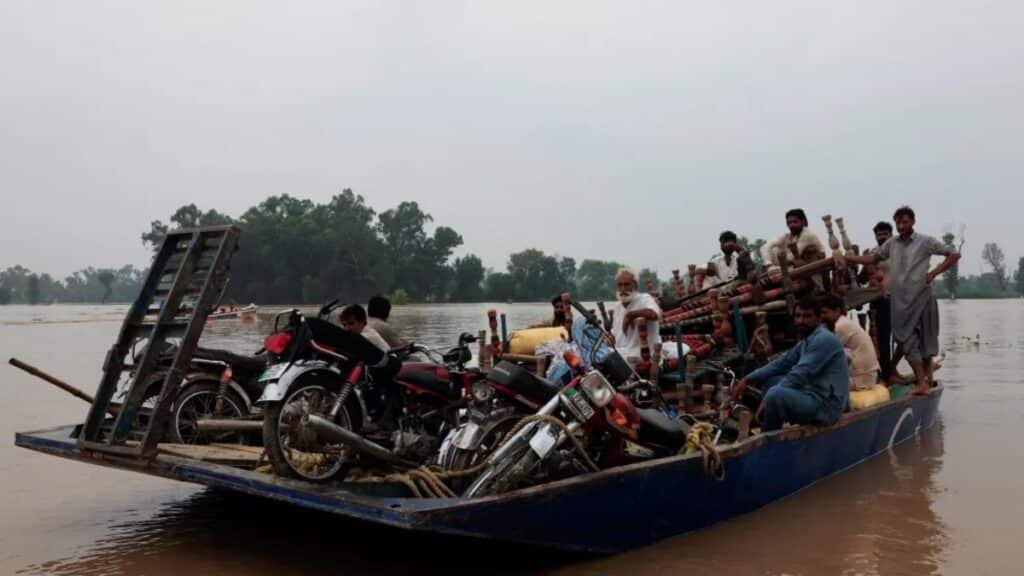LAHORE (Kashmir English): The devastating 2025 monsoon floods have caused enormous economic losses for Pakistan, with preliminary estimates putting the overall loss at Rs. 409 billion ($1.4 billion), which is 0.33% of the nation’s GDP, according to a report by Arif Habib Ltd.
The farm sector has taken the greatest hit from the disaster, with losses amounting to nearly three-fourths of the overall losses, as large tracts of agricultural land remain underwater, jeopardizing rural livelihoods and food security.
As per a report by Arif Habib Limited, the farm sector alone incurred damages of over Rs. 302 billion ($1 billion), with major crops like sugarcane, rice, and cotton getting severely damaged.
Punjab, the nation’s agricultural breadbasket, has witnessed more than 1.3 million acres of agricultural land being submerged, while Sindh has accounted for devastating losses, among which is the destruction of close to 80% of Bahawalnagar’s cotton harvest.
The trickle-down effects of such losses are anticipated to slow down GDP expansion by 29 basis points, with growth forecast in the agriculture sector having been cut from 2.2% to a mere 1.1% for FY26.
Other Losses During Floods
The transport and communication industry has also taken a serious beating, with damages estimated at Rs. 97.6 billion ($333 million). Damage to roads, bridges, and communication infrastructure not only severed connectivity but also slowed down relief operations and impaired the flow of commodities, adding to the economic burden.
Damages related to housing, although smaller in monetary terms at Rs. 8.95 billion ($31 million), have important social implications, directly impacting thousands of families who were forced to evacuate.
Livestock losses, although comparatively small in total at Rs. 0.5 billion ($2 million) has been a devastating hit to rural families, where animals are sometimes key assets. More than 6,000 animals have died, adding to food insecurity for the stricken districts.
The floods are also likely to expand Pakistan’s trade deficit by $1.9 billion during FY26. Cotton deficiencies may increase imports by 737,000 tons, worth $1.06 billion, while textile, rice, and sugar export losses will amount to $861 million. This two-way impact of increased imports and lower exports risks putting pressure on the nation’s weak external account.
Inflationary pressures pose another impending challenge. With shortages of key commodities like rice, sugar, and vegetables, food inflation is likely to accelerate, raising the Consumer Price Index (CPI) to 7.2% in FY26 from the pre-flood projection of 5.5%. The early warning signs of this stress already appear visible, with precipitous price rises seen in wheat, tomatoes, and onions.
Fiscally, the government has a tough task to fund rehabilitation and reconstruction activities. The expense of rebuilding infrastructure alone is put at Rs. 107 billion ($364 million), with roads and bridges taking up the largest share.
Adding agriculture-linked losses and social protection schemes, the fiscal impact is likely to steeply increase, calling for additional budgetary allocations as well as further dependence on foreign assistance.
As Pakistan struggles to recover from the floods, the economic cost highlights the imperative need for climate resilience and disaster preparedness.
With the complete extent of the damage still to be calculated, the ultimate cost is bound to increase, presenting a daunting challenge to the nation’s recovery process.




